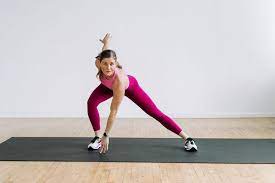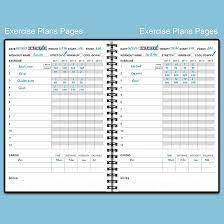The Benefits of Dynamic Exercise
When it comes to staying fit and healthy, exercise is key. And while many people are familiar with traditional forms of exercise like running, cycling, or weightlifting, there is another type of exercise that shouldn’t be overlooked: dynamic exercise.
Dynamic exercise involves movements that require a range of motion and engage multiple muscle groups at once. Unlike static exercises that focus on holding a position, dynamic exercises involve continuous movement. This type of exercise not only helps improve strength and flexibility but also offers a host of other benefits.
Improved Functional Fitness
Dynamic exercises mimic real-life movements, making them highly effective in improving functional fitness. Whether you’re lifting groceries, playing sports, or simply going about your daily activities, dynamic exercises help you build the strength and mobility needed to perform these tasks with ease.
Enhanced Muscle Coordination
Since dynamic exercises engage multiple muscle groups simultaneously, they promote better muscle coordination. This coordination translates into improved balance and stability, reducing the risk of falls and injuries.
Injury Prevention
Dynamic exercises not only strengthen muscles but also improve joint stability. By working on the muscles surrounding your joints, you can reduce the risk of sprains and strains. Additionally, dynamic exercises help improve flexibility and range of motion, making your body more resilient to sudden movements or awkward positions.
Increased Calorie Burn
If weight loss is one of your goals, dynamic exercise can be an excellent addition to your routine. Due to their high-intensity nature and engagement of multiple muscle groups, dynamic exercises help boost your metabolism and burn calories more efficiently than static exercises.
Cardiovascular Health
Dynamic exercises that get your heart rate up, such as jumping jacks or burpees, provide a cardiovascular workout. Regular participation in dynamic exercise helps improve heart health, increase lung capacity, and enhance overall endurance.
Examples of Dynamic Exercises
There are numerous dynamic exercises you can incorporate into your fitness routine:
- Squat jumps
- Lunges with a twist
- Mountain climbers
- Burpees
- High knees
- Plank jacks
- Medicine ball slams
- Kettlebell swings
- Battle ropes
- Box jumps
To maximize the benefits of dynamic exercise, it’s essential to warm up properly and maintain proper form throughout the movements. If you’re new to dynamic exercise, start slowly and gradually increase intensity and duration over time.
In conclusion, dynamic exercise offers a wide range of benefits, including improved functional fitness, enhanced muscle coordination, injury prevention, increased calorie burn, and better cardiovascular health. By incorporating dynamic exercises into your fitness routine, you can take your fitness journey to the next level and enjoy a healthier lifestyle overall.
8 Essential Tips for Effective and Safe Dynamic Exercise Routines
- Start with a warm-up to prepare your body for dynamic exercises.
- Incorporate movements that involve multiple muscle groups, such as jumping jacks or burpees.
- Include exercises that target different planes of motion, like lateral lunges or rotational twists.
- Vary the intensity and speed of your movements to challenge your body and increase calorie burn.
- Engage your core muscles during dynamic exercises to improve stability and balance.
- Don’t forget to breathe properly throughout the exercises to maintain oxygen flow and prevent fatigue.
- Gradually increase the difficulty of your dynamic exercises as you become stronger and more comfortable.
- Always listen to your body, modify or stop any exercise that causes pain or discomfort.
Start with a warm-up to prepare your body for dynamic exercises.
Before diving into dynamic exercises, it’s crucial to start with a proper warm-up to prepare your body for the physical demands ahead. A warm-up routine helps increase blood flow to your muscles, loosens up your joints, and raises your body temperature. It also mentally prepares you for the upcoming workout. Incorporating dynamic stretches and light cardiovascular activities like jogging or jumping jacks into your warm-up can help prevent injuries and optimize performance during dynamic exercises. By taking the time to warm up, you set yourself up for a safe and effective workout session.
Incorporate movements that involve multiple muscle groups, such as jumping jacks or burpees.
When it comes to dynamic exercise, it’s important to incorporate movements that engage multiple muscle groups simultaneously. Exercises like jumping jacks or burpees are excellent examples of such movements. Jumping jacks involve the legs, arms, and core muscles, making it a full-body workout. Burpees, on the other hand, target the legs, arms, chest, and core all at once. By including these exercises in your routine, you can maximize the benefits of dynamic exercise by challenging multiple muscle groups and improving overall strength and coordination.
Include exercises that target different planes of motion, like lateral lunges or rotational twists.
When incorporating dynamic exercises into your fitness routine, it’s important to include exercises that target different planes of motion. Exercises like lateral lunges or rotational twists engage muscles and joints in a way that traditional exercises may not. Lateral lunges, for example, work the inner and outer thighs while also improving hip mobility. Rotational twists engage the core and oblique muscles, promoting better spinal mobility and stability. By including exercises that target different planes of motion, you can enhance your overall strength, flexibility, and functional fitness, ensuring a well-rounded workout routine.
Vary the intensity and speed of your movements to challenge your body and increase calorie burn.
To make the most out of dynamic exercise, it’s important to vary the intensity and speed of your movements. By doing so, you can challenge your body in different ways and increase calorie burn. Incorporating high-intensity bursts or faster-paced intervals into your dynamic exercise routine not only keeps things interesting but also helps elevate your heart rate and boost metabolism. This variation in intensity and speed pushes your body to work harder, resulting in greater calorie expenditure and improved overall fitness. So, don’t be afraid to mix it up and push yourself during dynamic workouts for optimal results.
Engage your core muscles during dynamic exercises to improve stability and balance.
When performing dynamic exercises, it is crucial to engage your core muscles to enhance stability and balance. Your core muscles, including the abdominals, back muscles, and pelvic floor, act as a strong support system for your entire body. By consciously activating and strengthening your core during dynamic movements like lunges with a twist or squat jumps, you can improve your overall stability and balance. Engaging the core not only helps prevent injury but also allows you to perform these exercises with greater control and efficiency. So remember, focus on engaging your core during dynamic exercises to optimize your workout and reap the benefits of improved stability and balance.
Don’t forget to breathe properly throughout the exercises to maintain oxygen flow and prevent fatigue.
When engaging in dynamic exercise, it is crucial not to overlook the importance of proper breathing. Remember to breathe deeply and rhythmically throughout the exercises to maintain a steady flow of oxygen to your muscles. This not only helps optimize your performance but also prevents fatigue and allows you to sustain your energy levels throughout the workout. By consciously focusing on your breath, you can enhance your endurance, maintain focus, and get the most out of your dynamic exercise routine.
Gradually increase the difficulty of your dynamic exercises as you become stronger and more comfortable.
As you embark on your dynamic exercise journey, it’s important to remember the principle of gradual progression. Gradually increasing the difficulty of your dynamic exercises as you become stronger and more comfortable is key to achieving optimal results. By challenging yourself with incremental changes, such as adding resistance, increasing repetitions, or trying more advanced variations, you can continue to push your limits and improve your overall fitness level. This approach not only helps prevent plateauing but also ensures that you are continuously challenging your muscles and reaping the maximum benefits from your dynamic exercise routine. Remember, progress takes time, so be patient with yourself and celebrate each milestone along the way.
Always listen to your body, modify or stop any exercise that causes pain or discomfort.
When engaging in dynamic exercise, it is crucial to always listen to your body and prioritize its well-being. If any exercise causes pain or discomfort, it’s important to modify or stop that particular exercise. Pushing through pain can lead to further injury and setbacks in your fitness journey. Your body knows its limits, so pay attention to any signals of discomfort and make adjustments accordingly. By respecting your body’s needs and taking appropriate action, you can ensure a safe and effective dynamic exercise routine that promotes overall health and well-being.



